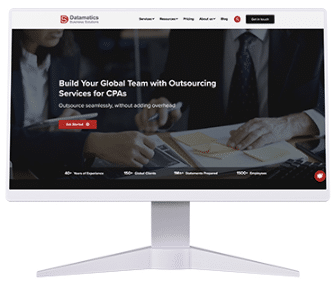Procure to pay (P2) involves the end-to-end processes an organization or business uses to acquire goods or services. It includes identifying the need for a product or service, raising a purchase requisition, sourcing, vendor selection, PO creation, receipt management, invoicing, and payment. As is evident, the P2P process involves multiple stakeholders, approvals, manual processes, and paperwork, making it complex, time-consuming, and error-prone. This can lead to long purchase cycles, delayed vendor payments, and poor visibility into cash flow. Procure to pay outsourcing addresses and resolves the core issues hampering the procure to pay process.
An efficient and effective procurement process is essential to enable seamless purchase, payment, compliance, and cost control across the business. The procurement process flow integrates multiple departments and functions –finance and accounts, compliance, and operations. It helps organizations sustain positive and mutually rewarding supplier relationships, ensure accuracy, derive real-time spend analytics, control costs, and optimize opportunities.
As businesses scale, the procure to pay cycle becomes increasingly complex due to rising purchase volume. Manual, paper-based, and repetitive tasks slow down the cycle and increase costs. Procure to pay outsourcing can accelerate time-to-value and streamline processes for organizations, delivering time, effort, and cost savings. This blog explores in detail how an optimized P2P cycle offers more than just cost benefits, ensuring strategic impact across supplier relationships and cash flow.
Key Takeaways
- AI-led automation is reshaping the entire P2P cycle, reducing manual work and errors.
- Real-time spend visibility helps companies control costs and manage cash flow better.
- Supplier management is becoming data-driven, improving performance and reducing risks.
- P2P outsourcing is now a strategic move, not just a cost-saving tactic.
- Predictive analytics boosts supply chain agility, helping businesses respond faster to disruptions.
What are the challenges to P2P in 2026?
2026 presents new and emerging challenges to global procurement. Geopolitical trade controls, increased compliance requirements, climate-driven transport disruptions, and conflicts have upended the procurement landscape and drastically increased costs, affecting even small- to mid-market firms. The WSJ Finance Trends 2026 report states that as the scope of finance leadership expands, primary responsibility for cost and expense management falls on CFOs, and procurement offers potential for strategic cost optimization. As market volatility and costs increase, it becomes even more critical for CFOs and other decision-makers to have real-time insights into spend data to support informed decision-making, smarter negotiations, and better supplier risk management.
Outsourcing the procure to pay process can help internal teams focus on strategic, value-enhancing activities. Reliable P2P outsourcing service providers have access to the latest technologies, including AI and analytics tools, ensuring accurate data, insights, and intelligence.
Top challenges predicted for 2026:
- Better alignment between procurement and finance as volatility fragments global supply chains, as mentioned in the PwC CFO – CPO Procurement Perspective Survey
- Procurement needs to be more than just a cost lever; it needs to be an innovation driver and a partner in growth
- Global expansion and layered supply chains are pushing companies to strengthen their forecasting and liquidity strategies to maintain financial resilience. (The CFO View: Asia Pacific Outlook 2026)
- Flexibility and adaptability are key; there is no ‘one size fits all’ solution in finance and accounting outsourcing today – so tailor your future-focused solutions intelligently.
- Anticipating hidden risks, buried deep in extended global supply chains.
Managing Supplier Relationships in 2026
Supplier relationships are highly critical in 2026. If not monitored and managed in real time, they can lead to compliance failures, revenue losses, and reputational damage. Supply chains are no longer cost centers to be optimized for efficiency; they are strategic assets that can future-proof businesses against significant disruptions.
Supplier management has to be an amalgamation of visionary leadership, proactive culture, and tech-led processes. It cannot be seen just as managing a global database of vendors. When you outsource procure to pay processes, specialized vendors deliver custom solutions that address everything from vendor onboarding to contract management to compliance tracking, enabling thriving supplier relationships and resilient procurement performance.
In 2026, supplier or vendor management is not only about optimizing costs, streamlining contracts, and ensuring performance; it is also about fostering collaboration and innovation. It is about building strategic resilience by enabling a shift from reactive to proactive supplier management, driven by technology, processes, and people.
CFOs and procurement leaders will need to share intelligence, align metrics, unify platforms, and integrate operations to actively protect margins, ensure business continuity, and unlock growth.
You can also read: The Emerging Role of Outsourcing in Sustainability Accounting
Unlocking Cash Flow Through Efficient P2P Cycle
An efficient procure to pay cycle can accelerate cash flow and improve margins. You need to choose your P2P vendor after careful evaluation. This credible, reputed partner aligns with your long-term strategic goals and can help you identify automation opportunities, adopt AI-led workflows, and drive transformation.
Benefits of a strategic partnership with a P2P outsourcing vendor:
Shorten procurement cycle – reduce holding costs, boost cash flow
Gain visibility into spend patterns – eliminate maverick spends, improve financial control
Drive intelligence – centralized supplier data and deep visibility enable informed decision-making, resilience, and continuity.
Negotiate more effectively – leverage AI-powered negotiation tools to secure better pricing and greater agility.
Transform supplier relationships – seamless purchasing experience, timely payments, and clear communication elevate suppliers into strategic partners.
Bridge talent gaps – automation and easy access to talent improve productivity.
Mitigate risks – compliance with procurement policies and contract terms, sustainability tracking, and secure transactions.
Effective procure-to-pay outsourcing improves cash flow by tightening spend control and eliminating leakage. With standardized workflows, automated approvals, and policy compliance built into every transaction, businesses prevent maverick spend, negotiate better vendor terms, and gain complete visibility into payables. This ensures that cash outflows are planned, predictable, and aligned with real business priorities — not driven by ad-hoc or unmanaged purchases.
Supply chain disruptions have a very significant impact on cash flow. Localized events, such as cross-border disputes and labor shortages, can increase operational expenses. Inventory management becomes challenging due to inaccurate forecasting, driven by a multitude of risks and volatility. Overstocking ties up precious working capital, and understocking disrupts production and incurs higher costs from alternative shipping routes.
Procter & Gamble plans to initiate a supply chain reorganization as part of a two-year restructuring plan set to begin in fiscal 2026, a direct response to “uncertainty in the consumer space, all of the tariff conversations, geopolitical uncertainty.” Initiatives include “rightsizing, leveraging automation, right-locating production to drive efficiencies, faster innovation, cost reduction, and even more reliable and resilient supply”, all pointing to how critical procurement and supply chain functions are to ensuring profitable global business operations in 2026.
Conclusion
In 2026, P2P outsourcing is no longer just an efficiency play — it’s a strategic lever for stronger vendor relationships and healthier cash flow. With smarter automation, real-time analytics, and domain-led governance, outsourced P2P teams help businesses pay accurately, negotiate better terms, and build trust with suppliers. At the same time, they bring discipline, visibility, and predictability to every dollar leaving the organization. The result is a more resilient supply chain, improved working capital, and a finance function that’s positioned to drive growth, not just manage transactions.
FAQs
1. What is Procure-to-Pay (P2P) outsourcing?
A streamlined, end-to-end management of procurement and payments handled by an external expert.
2. Why is P2P outsourcing important for 2026?
It improves agility, visibility, compliance, and cost efficiency in a volatile supply chain environment.
3. How does AI enhance the P2P process?
It automates invoices, matching, approvals, and provides predictive insights for faster decisions.
4. What challenges does P2P outsourcing solve?
Manual errors, slow cycles, poor visibility, compliance issues, and supplier coordination gaps.
5.What should companies look for in a P2P partner?
AI capability, domain expertise, analytics, compliance support, and strong supplier management.

Harsh Vardhan



